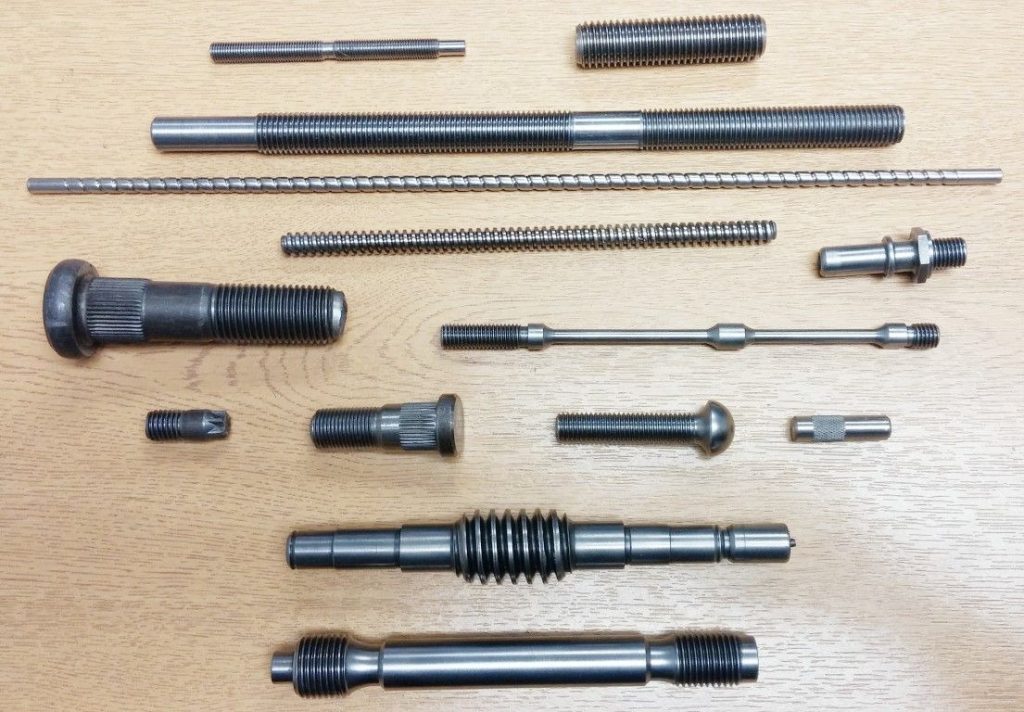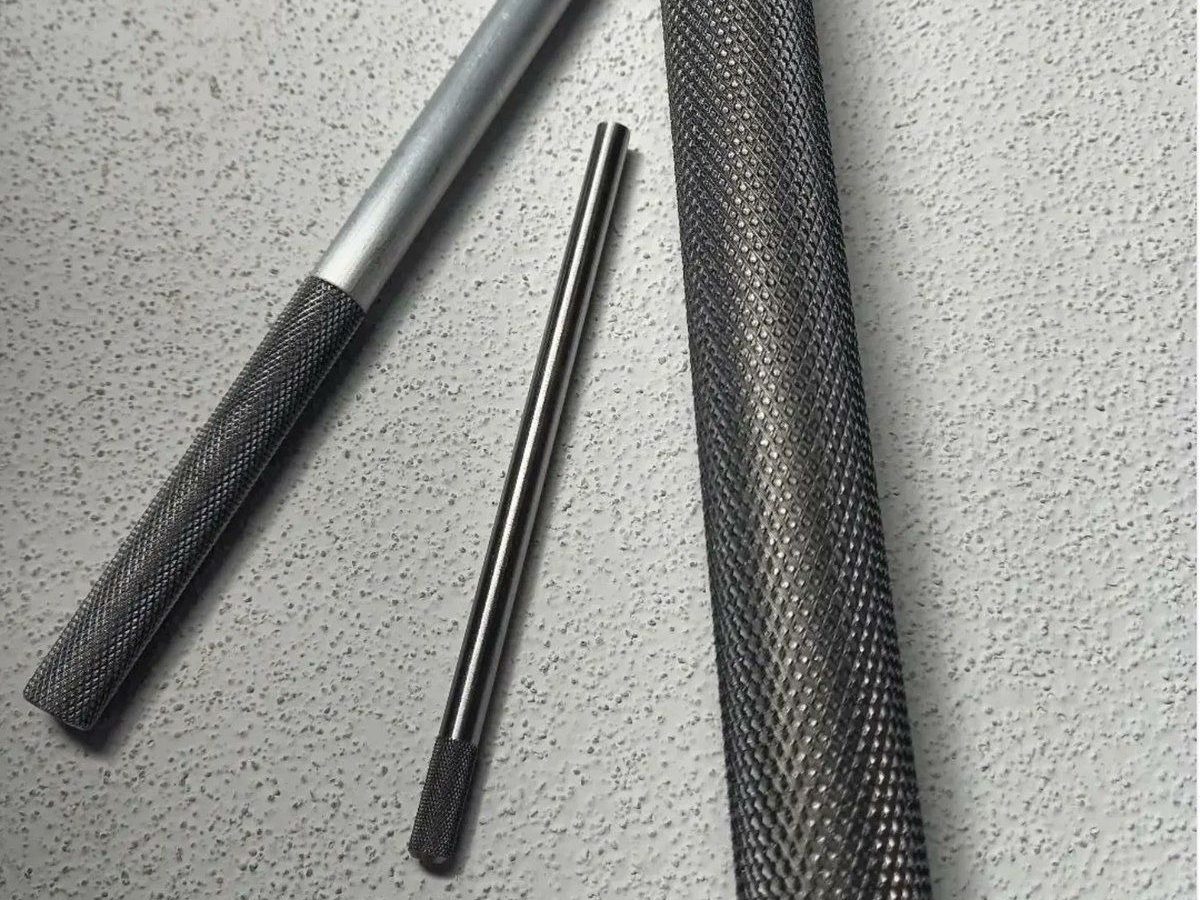Unlocking Potential: The Power of Thread Rolling and Knurling
In the world of manufacturing and engineering, small processes can make a huge difference. Among the most effective are thread rolling and knurling. These precision metalworking techniques offer a range of compelling advantages that go beyond simple surface modification. Let’s dive into why these methods are becoming increasingly essential for creating stronger, more functional, and more efficient products.
What is Thread Rolling?
Thread rolling is a cold-forming process where a die forces metal to plastically deform around a pre-formed point or rod, creating the threads of a screw, bolt, or nut. Instead of cutting material away (like in tapping or tapping), the metal is actually shaped and worked.

Key Benefits of Thread Rolling:
- Superior Surface Integrity & Strength: This is perhaps the biggest advantage. Since the metal is work-hardened during the rolling process, the resulting threads exhibit significantly higher fatigue strength and tensile strength compared to cut threads. The cold-forming process creates a smoother, more uniform surface finish, reducing stress concentrations and making the threaded component much more resistant to failure over time. It’s a process that truly enhances the thread strength of the component.
- Enhanced Load Capacity: The increased strength and better load distribution achieved through thread rolling allow these fasteners to withstand higher clamping forces and repeated loading cycles without loosening or failing. This is critical in demanding applications like automotive engines, aerospace structures, and heavy machinery.
- Improved Efficiency & Cost-Effectiveness: Because thread rolling is a continuous process, it can be significantly faster than cutting threads, especially for high-volume production. It also generates very little swarf (metal waste), leading to material savings and less machine downtime for chip disposal. While often requiring a pre-formed stock (like a point or round rod), the overall process can be highly efficient, contributing to cost savings.
- Consistency & Precision: Roll-formed threads offer excellent dimensional accuracy and consistency. This is crucial for ensuring reliable assembly and performance in complex systems where precise thread engagement is necessary.
What is Knurling?
Knurling involves using a knurling tool (often a hardened steel wheel with a specific helix pattern) to create a controlled pattern (typically a cross-hatched or “diamond” pattern) onto a surface, usually a shaft or button. This process deforms the surface layer of the metal.

Key Benefits of Knurling:
- Enhanced Grip & Tactile Feedback: The primary purpose of knurling is to create a non-slip surface. The pattern provides excellent friction, making it easier for users (like technicians or consumers) to grip and manipulate parts, even with gloves on or in wet/dirty conditions. This improves ergonomic handling and reduces the risk of dropping or mishandling components.
- Improved Assembly Efficiency: In manufacturing settings, knurling can significantly speed up assembly processes. Technicians can more easily insert fasteners like hex keys (Allen wrenches) into knurled recesses, reducing the time and effort required for tightening or loosening. This is a practical application of marking surface enhancement.
- Aesthetic Appeal: Beyond function, knurling adds a sophisticated and often premium look to products. It provides a distinctive texture that can enhance the perceived quality and value of consumer goods, industrial controls, and decorative elements. It’s a way to subtly elevate the surface finish.
- Part Identification & Alignment: In some cases, knurling is used to create subtle marks or patterns for part identification, calibration, or alignment purposes.
Where are They Used?
These processes find applications across countless industries:
- Automotive: Engine components, fasteners, brake pedals
- Aerospace: Critical fasteners, control knobs, instrument panels
- Industrial: Machine parts, couplings, valve stems
- Consumer Goods: Knobs, handles, dials, tool grips
- Medical: Instruments, device components
The Power of Partnership: Precision Thread Rolling
Bracebridge is proud to be part of the Precision Thread Rolling sister company network. This means we have direct access to state-of-the-art facilities dedicated solely to these advanced metalworking processes. Our combined expertise ensures that we can offer:
- Comprehensive Solutions: From intricate custom thread rolling designs to complex knurling patterns, our integrated approach allows us to handle a wider range of projects with unparalleled expertise.
- Consistent Quality: Leveraging the specialised equipment and skilled personnel from Precision Thread Rolling guarantees the highest standards of accuracy and surface integrity for both thread rolling and knurling operations.
- Expanded Capacity: Our partnership provides the necessary resources to meet demanding production schedules for both services.
Thread Rolling vs. Knurling
While both are valuable cold-forming processes, they serve different primary purposes:
- Thread Rolling: Focuses on creating strong, durable threads for fastening and joining.
- Knurling: Focuses on creating a functional grip or aesthetic texture on a surface.
Conclusion
Whether you’re looking to maximise the strength and reliability of fasteners, improve the user experience with better grips, or enhance the appearance of a product, thread rolling and knurling offer compelling solutions. These advanced metalworking techniques demonstrate how strategic surface modification can lead to significant improvements in performance, efficiency, and user satisfaction.
And with the backing of Precision Thread Rolling, our capabilities are stronger than ever. We invite you to explore how our combined expertise in thread rolling process and knurling process can elevate your next project.

